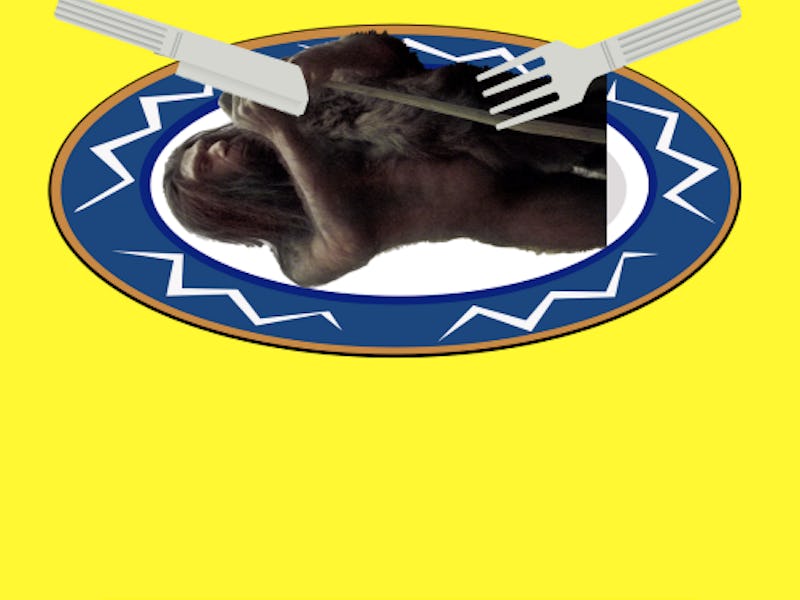A new study released Thursday answers the question that you never knew you needed to ask: How nutritious is it to eat another human? The answer? Not that helpful — which might be disappointing for those looking to balance their diet with human flesh but a relief for those who would prefer not to be eaten. This conclusion is not only a fun fact to bring up at your next dinner party but also provides the key to understanding why prehistoric humans ate each other. Why murder a pal when you could dine on mammoth instead?
In his paper in Scientific Reports, the University of Brighton archaeologist James Cole, Ph.D, (who wrote this paper alone — it’s unclear whether he started with a team) calculated that a 145-pound human could provide around 144,000 calories. In contrast, a mammoth could have provided up to 3,600,000 calories, a horse 200,100 calories, and a red deer 163,000 calories. In terms of nutritional value, humans don’t exactly constitute good eating.
Cole’s work, as he writes in his paper, presents the first time a “full nutritional template for the calorific value of the human body in comparison with the faunal record.” His calculations not only included the protein in a human’s edible skeletal mass, but also the lungs, liver, brain, heart, nervous tissue, bone marrow, genitalia, and skin — all of which are fair game in cannibalism. While his work focuses on males, Cole writes that future human nutritional templates should include the potential caloric value of adult women and children — because equal representation is always important, even in cannibalism. Building on previously published data on the chemical composition of the human body, he wondered how meal prep could change the caloric potential of human flesh.
“There has been much recent interest in how cooking can increase the caloric value retrieved from meat,” writes Cole. “However, given the nature of this study, it was not possible to conduct analyses on cooked human flesh.”
The caloric value for different components of the human body.
These caloric calculations are at the crux of Cole’s argument that hunger probably wasn’t the singular reason early humans ate each other — together with their neighbors and occasional lovers, the Neanderthals. Because human flesh provides relatively few calories, cannibalism as a means of hunger alleviation simply wasn’t a practical choice. However, numerous pieces of evidence prove that cannibalism occurred anyway, so the question of why still stands. Cole argues that cannibalism, for both early man and Neanderthals, was not purely nutritionally motivated and was probably a social act that came with cultural meaning.
“We know that modern humans have a range of complex motivations for cannibalism that extend from ritual, aggressive, and survival to dietary reasons,” writes Cole. “Why then would a hominin species such as the Neanderthals, who seem to have had varying attitudes to the burial and treatment of their dead not have an equally complex attitude towards cannibalism?”
The archaeological record of fossils found in areas where there was “anthropogenic modification” but not actual cannibalism supports this theory. Archeologists believe there are 13 key signatures of cannibalism that can be found on the fossil skeletons, including the absence of a cranial base and cut-and-chop marks. But a lack of a cranial base, some argue, could just mean that skull was turned into a skull cup, while scraping marks are considered to be a signature that flesh was eaten as a ritual and not a nutritional need. There’s a myriad of reasons humans might have eaten each other, he argues, and acquiring calories is by no means cannibalism’s sole purpose.
Which, as Cole notes in the above quote, is true of the cannibalism that has happened in the centuries since the Paleolithic era. As researcher Bill Schutt points out in Cannibalism: A Perfectly Natural History, cannibalism is neither unusual or the default behavior when people don’t have other food options — and the reasons why are as varied as the flavors each of us has in our bones.
